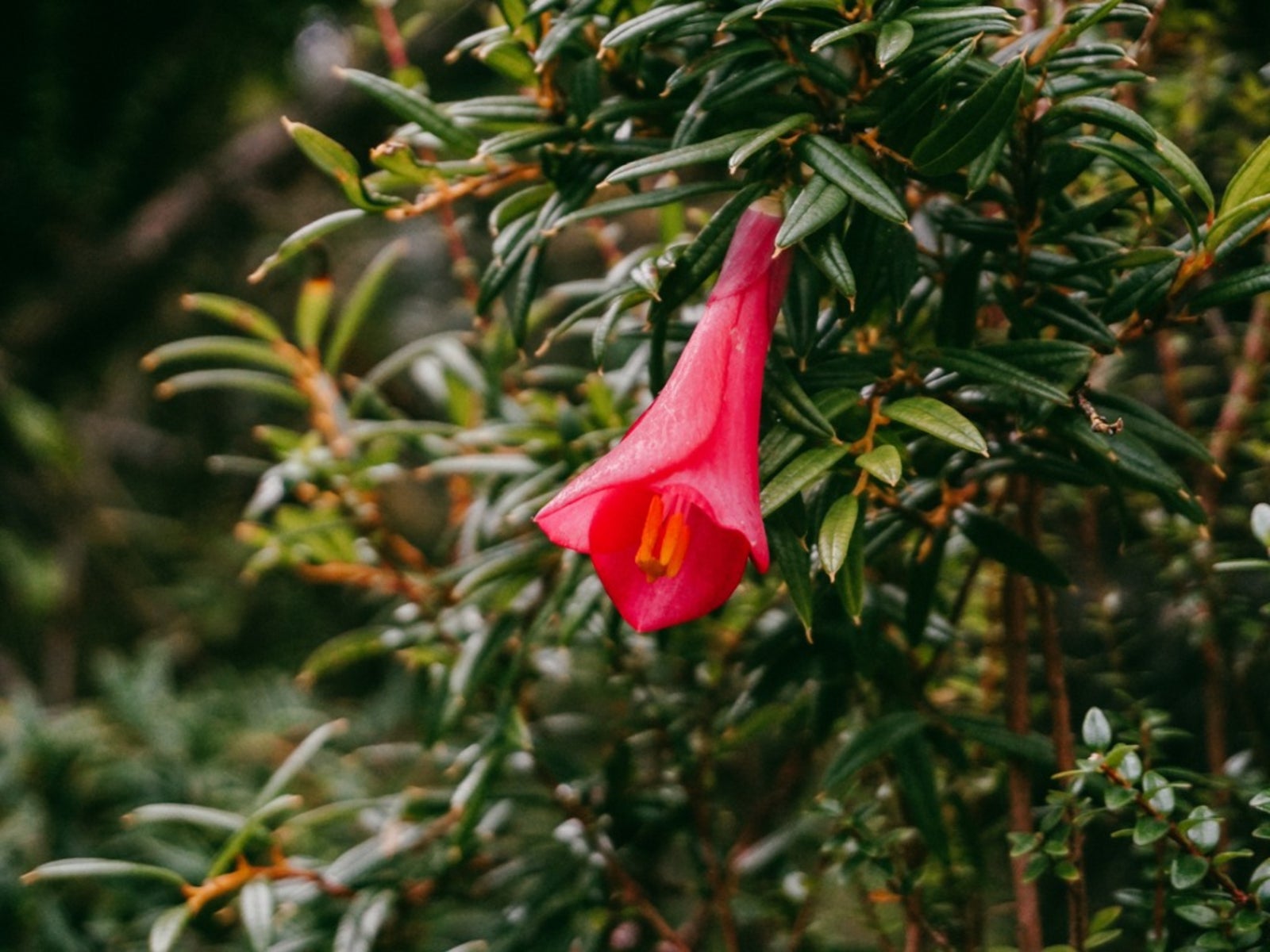Lapageria Plant Care – How To Grow A Chilean Bellflower Vine


Lapageria rosea plants, also frequently called Chilean bellflowers, are native to the coastal regions of Chile. It is the national flower of Chile and named after Empress Josephine Lapagerie, wife of Napoleon Bonaparte. It can’t be grown just anywhere, though, and takes some special care to flourish. Keep reading to learn more about Lapageria plant care and Chilean bellflower information.
Lapageria Plant Care
Lapageria rosea plants are long, spreading vines that can grow to 15 feet (4.6 m.) in length and spread just as wide. The leaves have a thick, leathery feeling that is shared by the flowers, which are 3-to 4-inch (7.6 -10 cm.) long pendulous bells that appear as red in nature but come in a range of colors in cultivation. The Chilean bellflower vine is evergreen, but hardy only in USDA zones 9a through 11. It can handle some frost, but extended cold will kill it. If you live in a colder area, you can grow your Chilean bellflower vine in a container. The plants do very well in well-draining, well-watered pots.
How to Grow a Chilean Bellflower Vine
Lapageria rosea plants are native to the coastal regions of Chile and, as such, they grow best in similarly warm and humid climates. The closest approximation to this in the United States is the San Francisco Bay area of California, where growing Chilean bellflowers is common. Wherever you grow it, Lapageria plant care takes a little bit of work. The plant prefers soil that is well draining but never dry, which means you may have to water it every day. The plant grows best in full to partial shade, making a great addition to shade gardens. The plant should blossom between July and December. The flowers may attract hummingbirds and, if pollinated, will produce a sweet, yellow fruit that is safe to eat though full of seeds.
Gardening tips, videos, info and more delivered right to your inbox!
Sign up for the Gardening Know How newsletter today and receive a free copy of our e-book "How to Grow Delicious Tomatoes".

The only child of a horticulturist and an English teacher, Liz Baessler was destined to become a gardening editor. She has been with Gardening Know how since 2015, and a Senior Editor since 2020. She holds a BA in English from Brandeis University and an MA in English from the University of Geneva, Switzerland. After years of gardening in containers and community garden plots, she finally has a backyard of her own, which she is systematically filling with vegetables and flowers.
-
 Grow ‘Karl Rosenfield’ Peony Plants For The Ultimate Frilly Border Beauties And Cut Flowers
Grow ‘Karl Rosenfield’ Peony Plants For The Ultimate Frilly Border Beauties And Cut FlowersFor frilly double magenta peony petals infused with a heady fragrance, grow ‘Karl Rosenfield’ peony plants. Here’s how to cultivate the ultimate plushy blooms
By Tonya Barnett
-
 10 Common Composting Problems That Can Spoil Your Garden Gold – Plus Easy Fixes
10 Common Composting Problems That Can Spoil Your Garden Gold – Plus Easy FixesLearn how to troubleshoot common composting issues before they ruin your stash – from bad smells and bugs to materials not breaking down as they should.
By Susan Albert